For eleven days in mid-April, I had the opportunity to travel to Costa Rica with a group from my school. The goal was to have some fun and improve our spanish-speaking skills, but, of course, there were more important things to do: find birds!
We arrived at JFK around 2:30 AM, and by 5 PM we were in Monteverde, up in the Costa Rican mountains. After enjoying the cloud forest for a couple of days, including ziplining above the canopy and hiking around after dark one night, we moved on to Manuel Antonio, along the Pacific coast. Nicoya, on the Nicoya Peninsula (one of the warmest spots in Costa Rica–highs in the high 90s F) was our home for a few more days. Afterwards, we went back up into the mountains for spectacular looks at Arenal volanco, and not-so-good looks at the fog covering Poas volcano. Then it was back to San José for our flight out. Below, some pictures!
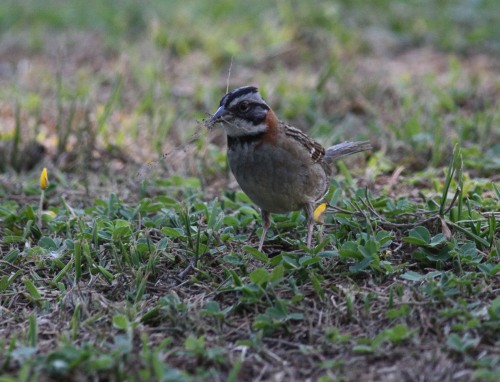
Rufous-collared Sparrow is a relatively common species of higher elevations.
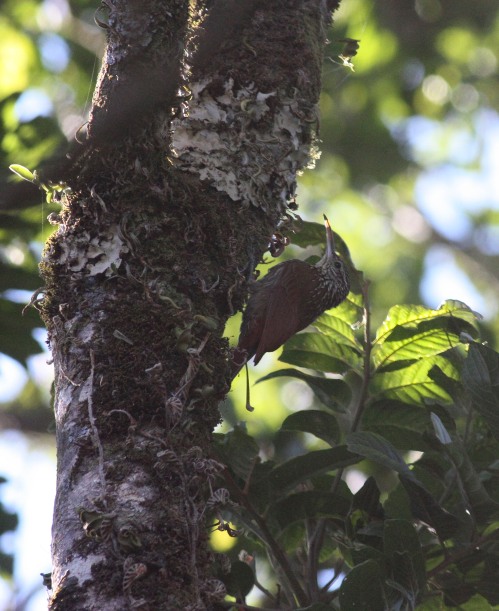
Streak-headed Woodcreeper in Monteverde

The tail of a sleeping Orange-bellied Trogon on our night hike.

Purple-throated Mountain-Gem at the Monteverde feeders, a species endemic to CR and w. Panama.

The blurry form of a sleeping Wood Thrush, taking a well-deserved rest en route to North America.
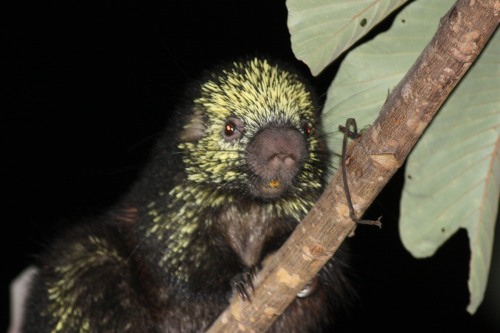
A porcupine, definitely NOT sleeping!

Green-crowned Brilliant at the Monteverde feeders.

Blue-crowned Motmot in heavy cover at Monteverde.

Emerald Toucanet

Rufous-capped Warbler

Keel-billed Toucan, a lucky spot!

A pair of Scarlet Macaws at the Rio Tárcoles, an even luckier spot!
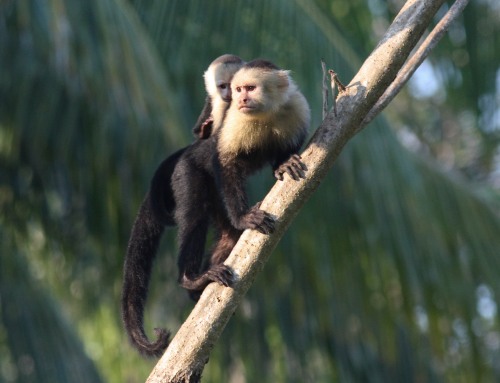
Capuchin monkeys in Manuel Antonio.
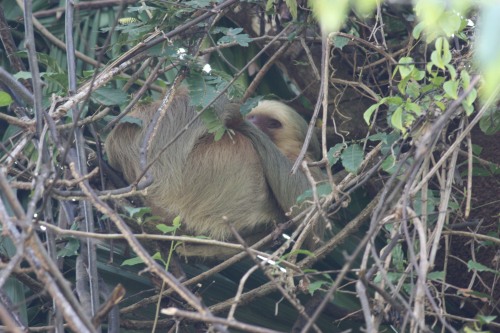
A two-toed sloth peers down from the treetops.

A beautiful Golden-hooded Tanager in Manuel Antonio.

A Plain Xenops in Manuel Antonio.

Superb views of an Ornate Hawk-Eagle devouring an iguana.

Orange-chinned Parakeets

Yellow-green Vireo in Nicoya.
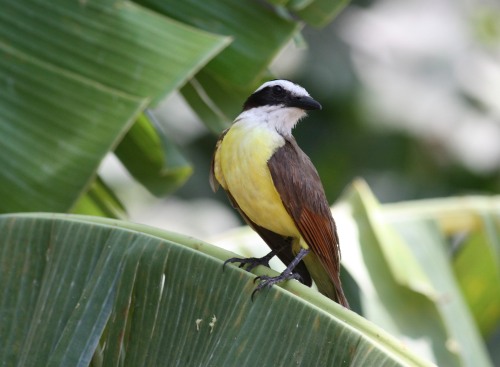
Great Kiskadee in Nicoya.

Tropical Kingbird in Nicoya.
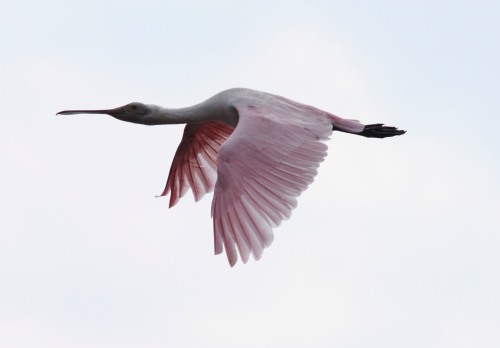
Roseate Spoonbill takes flight in Palo Verde.

This Whimbrel seemed out of place in the mangrove forests which are its home when not in North America.

There were tons of reptiles around, of course.
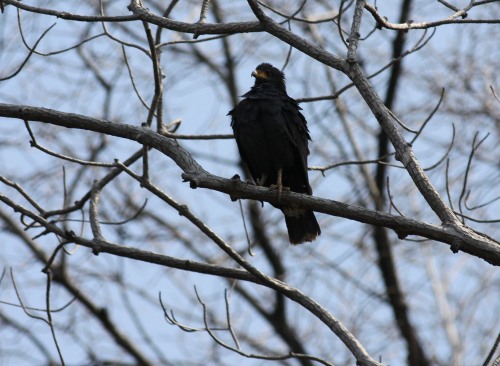
Common Black-Hawk (Mangrove subspecies)

A Mangrove Swallow, another resident of the mangrove forests.

Another iguana-type reptile (ID anyone?)

Birds weren't the only flying creatures around...
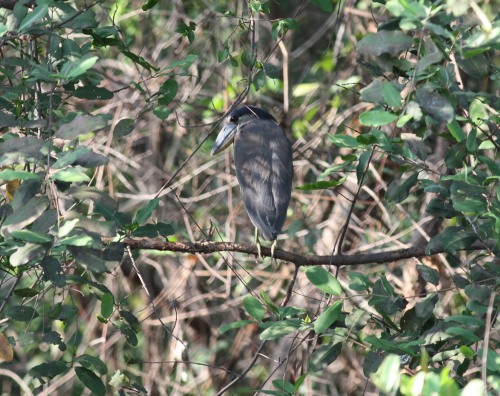
An awesome-looking bird, the Boat-billed Heron.

One of my favorites on the trip: Turquoise-browed Motmot in Nicoya.

The omnipresent Clay-colored Thrush.
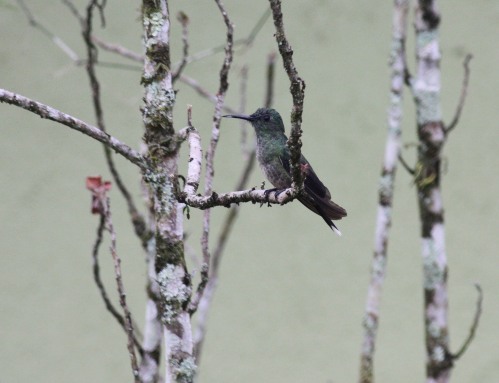
Scaly-breasted Hummingbird near Arenal.

Spectacular views of Arenal volcano (click to enlarge!!!)

Another cool-looking bird, Common Tody-Flycatcher.
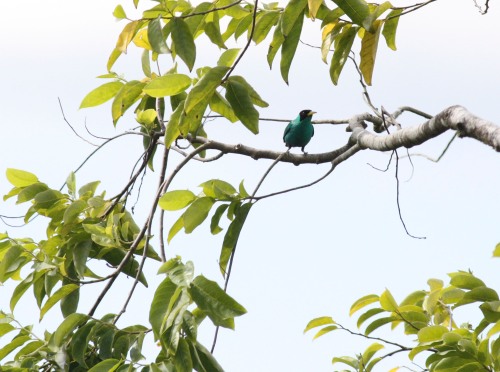
Green Honeycreeper, an electric turquoise-colored bird.

Toucan sweep! This one is a Chestnut-mandibled Toucan.

A common, but interesting bird, the Blue-gray Tanager.

Closer views of Great Kiskadee at Arenal.

One member of a troop of howler monkeys (congos, en español).

A Montezuma Oropendola leaving its nest--this species has an otherworldly call.

Superb looks at this male Green-breasted Mango marked our departure from Arenal.
There are many more photos, but there’s not room for all 1100 of them!










































